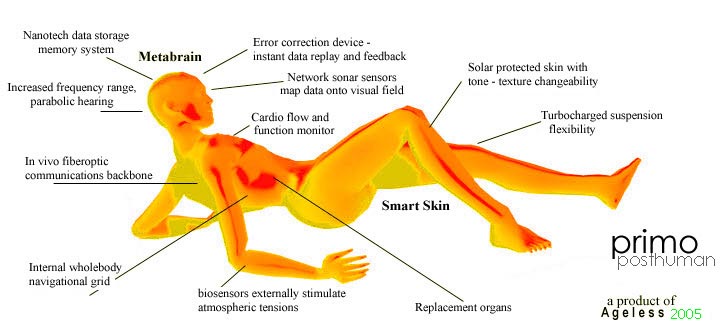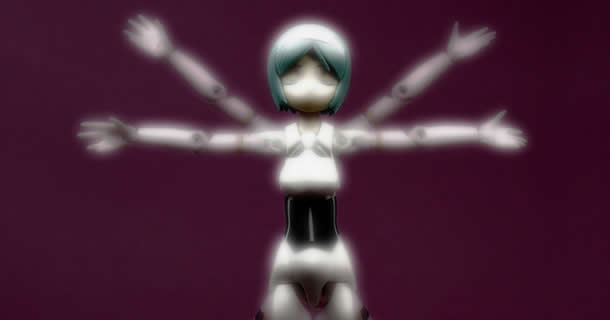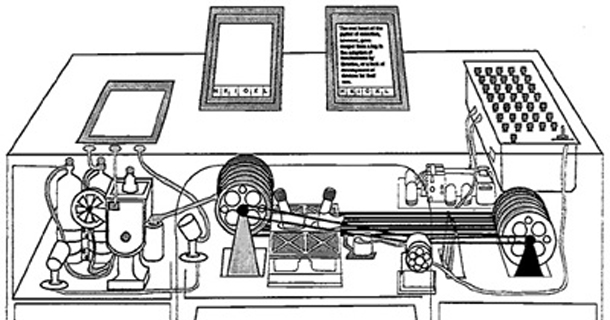In the coming decades, a radical upgrading of our body’s physical and mental systems, already underway, will use nanobots to augment and ultimately replace our organs. We already know how to prevent most degenerative disease through nutrition and supplementation; this will be a bridge to the emerging biotechnology revolution, which in turn will be a bridge to the nanotechnology revolution. By 2030, reverse-engineering of the human brain will have been completed and nonbiological intelligence will merge with our biological brains.
The conceptual diagram is by philosopher Natasha Vita-More, and the quote is from Ray Kurzweil’s “The Scientific Conquest of Death”, in which Ray sets out a vision for a route to indefinite human lifespans. You can read the full essay on Ray’s site or abridged highlights courtesy of DW2.






 @
@
 Tags:
Tags: 





 There’s a lot of news around Augmented Reality, fueled by a flurry of apps for location- and video-enabled smartphones like the Android and the iPhone. Here’s a good overview of how some of them are blending the world around us with the virtual world. Read the full article at
There’s a lot of news around Augmented Reality, fueled by a flurry of apps for location- and video-enabled smartphones like the Android and the iPhone. Here’s a good overview of how some of them are blending the world around us with the virtual world. Read the full article at 




 Like all images on the site, the topic icons are based on images used under Creative Commons or in the public domain. Originals can be found from the following links. Thanks to
Like all images on the site, the topic icons are based on images used under Creative Commons or in the public domain. Originals can be found from the following links. Thanks to